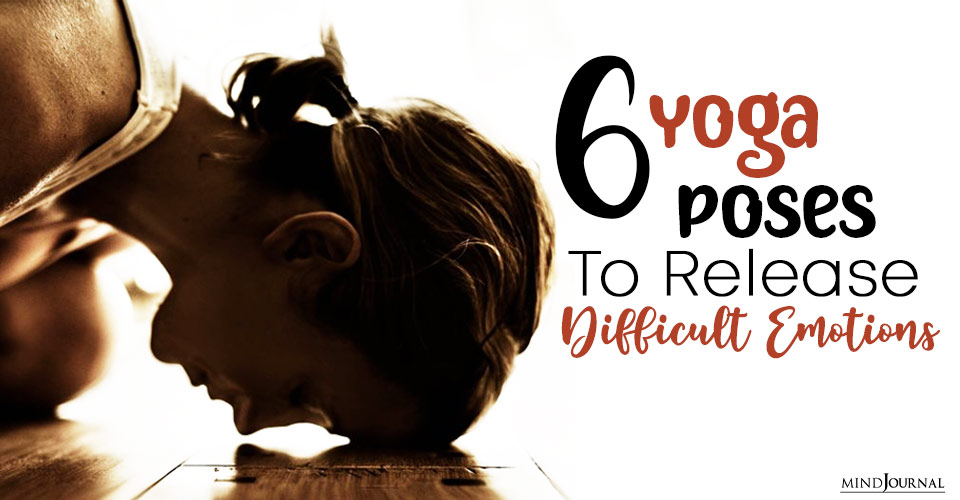Yoga for emotional release? Yes, indeed, yoga is not just a physical practice; it is also a powerful tool for emotional release. By connecting the mind and body, yoga can help release pent-up emotions, reduce stress and anxiety, improve mood and emotional well-being, and increase self-awareness and mindfulness.
In this article, we will explore the mind-body connection, how yoga can help release emotions, the benefits of yoga for emotional release, specific yoga poses and pranayama techniques that aid in emotional release, and how yoga can be combined with other practices for maximum effect.
Understanding emotional release through yoga

The mind-body connection
The mind and body are intricately connected, and emotions can manifest as physical sensations in the body. When we experience stress, anxiety, or other intense emotions, our bodies may respond with tension, tightness, or discomfort. Yoga helps us tap into this mind-body connection by bringing awareness to our physical sensations and using movement and breath to release emotional energy.
How yoga can help release emotions
Yoga combines physical postures, breathwork, and meditation to create a holistic practice that supports emotional release. The physical postures, or asanas, help release tension and stagnant energy stored in the body. By moving through different poses and holding them, we can access and release emotions that may be trapped within us. Additionally, the breathwork and meditation aspects of yoga help calm the mind, reduce stress, and create space for emotional processing and release.
Benefits of yoga for emotional release

Reduced stress and anxiety
One of the primary benefits of yoga for emotional release is its ability to reduce stress and anxiety. The combination of physical movement, deep breathing, and mindfulness helps activate the body’s relaxation response, calming the nervous system and reducing the production of stress hormones.
Regular yoga practice can help you manage stress more effectively and experience a greater sense of calm and peace.
Improved mood and emotional well-being
Yoga has been shown to improve mood and emotional well-being by increasing the production of endorphins, the body’s natural feel-good hormones.
The physical movement and stretching in yoga release tension and promote the flow of energy, leaving you feeling more balanced and uplifted. Additionally, the mindfulness and self-awareness cultivated through yoga help you better understand and regulate your emotions, leading to improved emotional well-being.
Increased self-awareness and mindfulness
Yoga encourages self-awareness and mindfulness, which are essential for emotional release. Through the practice of yoga, you learn to observe your thoughts, emotions, and physical sensations without judgment.
This heightened awareness allows you to recognize and acknowledge your emotions, creating space for their release. By cultivating mindfulness on the mat, you can carry this awareness into your daily life, leading to greater emotional resilience and well-being.
Yoga poses for emotional release

Child’s pose (Balasana)
Child’s pose is a gentle resting pose that helps release tension in the back, shoulders, and hips. It allows you to surrender and let go, creating a sense of safety and comfort. In this pose, you can focus on deep breathing and visualize releasing any emotions or stress held in your body.
Bridge pose (Setu Bandhasana)
Bridge pose opens the chest and heart, promoting emotional release and vulnerability. It stretches the front of the body and strengthens the back, creating a balance between strength and surrender. As you lift your hips in this pose, imagine lifting any emotional burdens or heaviness from your heart.
Camel pose (Ustrasana)
Camel pose is a deep backbend that opens the heart and throat chakras, allowing for emotional release and expression. It stretches the front of the body and strengthens the back, creating a sense of openness and freedom. As you arch back in this pose, imagine releasing any emotions that may be stored in your heart and throat.
Corpse pose (Savasana)
Corpse pose is a final relaxation pose that allows for complete surrender and integration of the practice. It helps release physical and mental tension, promoting deep relaxation and emotional release. In this pose, you can visualize letting go of any emotions or thoughts that no longer serve you, allowing them to dissolve into the earth.
Pranayama techniques for emotional release

Deep breathing (Pranayama)
Deep breathing is a simple yet powerful pranayama technique that can help release emotions and calm the mind. By taking slow, deep breaths, you activate the body’s relaxation response and increase oxygen flow to the brain, promoting a sense of calm and clarity. Practice deep breathing whenever you feel overwhelmed or need to release emotional tension.
Alternate nostril breathing (Nadi Shodhana)
Alternate nostril breathing is a balancing pranayama technique that helps harmonize the left and right hemispheres of the brain. It promotes a sense of balance and calm, making it an effective tool for emotional release. By alternating the breath between the left and right nostrils, you can release emotional blockages and restore energetic balance.
Combining yoga with other practices for emotional release

Meditation
Meditation is a powerful practice that complements yoga for emotional release. By sitting in stillness and observing your thoughts and emotions, you can cultivate a sense of inner peace and detachment. Meditation allows you to dive deeper into your emotional landscape, bringing awareness to any suppressed emotions and facilitating their release.
Journaling
Journaling is a valuable tool for emotional release and self-reflection. By putting your thoughts and emotions onto paper, you can gain clarity and insight into your inner world. Journaling can be combined with yoga by writing down any emotions or insights that arise during your practice. This process allows for further exploration and release of emotions.
Therapy or counseling
While yoga and other practices can be beneficial for emotional release, it’s important to recognize that they may not be a substitute for professional therapy or counseling. If you are struggling with intense emotions or trauma, seeking the guidance of a trained therapist can provide additional support and healing.
Conclusion

Yoga is a powerful tool for emotional release, offering a holistic approach to healing and well-being. By connecting the mind and body, yoga helps release pent-up emotions, reduce stress and anxiety, improve mood and emotional well-being, and increase self-awareness and mindfulness.
Through specific yoga poses, pranayama techniques, and the integration of other practices like meditation and journaling, you can enhance the emotional benefits of your yoga practice. Remember to listen to your body and honor your emotions as you embark on this transformative journey of emotional release through yoga.
Originally posted 2023-04-14 17:04:55.



Thank you a lot for your article! I always have difficulty in releasing my emotion; sometimes, I feel stuck. Perhaps, doing more yoga will gradually help me then.
@Carl: Hei, thanks for dropping a comment. Indeed, we believe that yoga will help you unleash your “stuck” emotion and keep you balanced. Good luck!
Thanks for the tips. I’ve been emotionally stuck lately …
@Nannie: Hi Nannie, you are welcome! Hope you can release all negative energy 🙂
Hi there, my name is Cody Griner. I apologize for using your contact form, but I wasn’t sure who the right person was to speak with. I tried to download the yoga guide on your website but failed. Could you help send it to my email address?
@Cody: Hi Cody, the download form seems to work for us, but we just sent a copy to your email address. Have fun!
Quick question to ask you… Does it work with people with previous trauma?
@April: Dear April, yes. You may read further here https://yogalian.com/yoga-for-trauma-survivors/
Thanks for your post. I’ve learnt loads and will apply in my daily practice.
@Azucena: You are welcome and we are so glad to help!